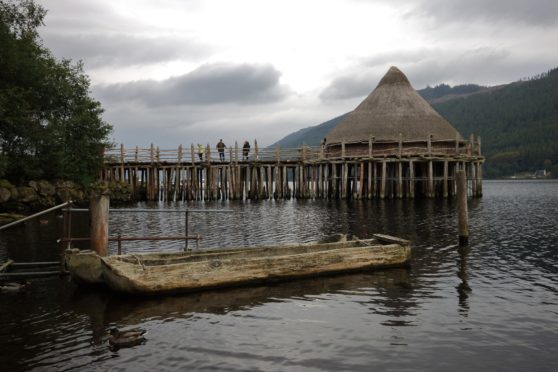After a devastating fire many have expressed concern about the loss of the unique Scottish Crannog Centre and the insight it gave to Scotland’s prehistory.
Many have been sharing memories of their visit to the reconstructed wooden museum, which offered a glimpse into past lives on Loch Tay.
A fire at the site on Friday evening is thought to have largely destroyed it. Firefighters were said to have been left battling the blaze until the early hours.
A crannog is a type of ancient loch-dwelling found throughout Scotland and in Ireland during the Iron Age.
In Scotland, crannogs were most commonly timber-built roundhouses that sat on stilts driven into the waterbed.
What is the Crannog Centre?
Historians estimate Scotland had hundreds of river dwellings which formed artificial islands around our waterways.
The first crannogs date back some 5,000 years but were used and re-modified in parts of Scotland, including Perthshire up until the 17th Century.
Built by the Scottish Trust for Underwater Archaeology, the reconstructed crannog in Perthshire aimed to “promote the research, recording, preservation and interpretation of Scotland’s underwater heritage”.
It was built between 1994 and 1997, led by Dr Nicholas Dixon and Ms Barrie Andrian alongside a dedicated team of volunteers.
Since it opened to the public the Scottish Crannog Centre has provided many with an insight into life on the water in prehistoric times.
An absence of written records from the time means historians rely on physical objects to interpret what life was like for early settlers on Loch Tay.
As well as the reconstructed crannog, the centre also included a museum with graphic panels, videos and replica objects.
“Our displays provide a glimpse into the material culture of every day domestic life, the Iron Age farming world and personal adornment.
“They also show evidence of trading beyond the immediate Loch Tay environment,” the centre explains.
‘One of the most wonderful heritage sites in the world’
Many shared their sadness at the fire, and expressed concern at the potential loss of the unique museum.
Historian Dr Callum Watson described the centre as one of the most wonderful heritage sites in the world.
[jw MADjYRMS]
“This is absolutely devastating news. The Scottish Crannog Centre is one of the most wonderful heritage sites in the world, nevermind Scotland, and I hope they are swiftly able to secure funding to rebuild,” he said.
